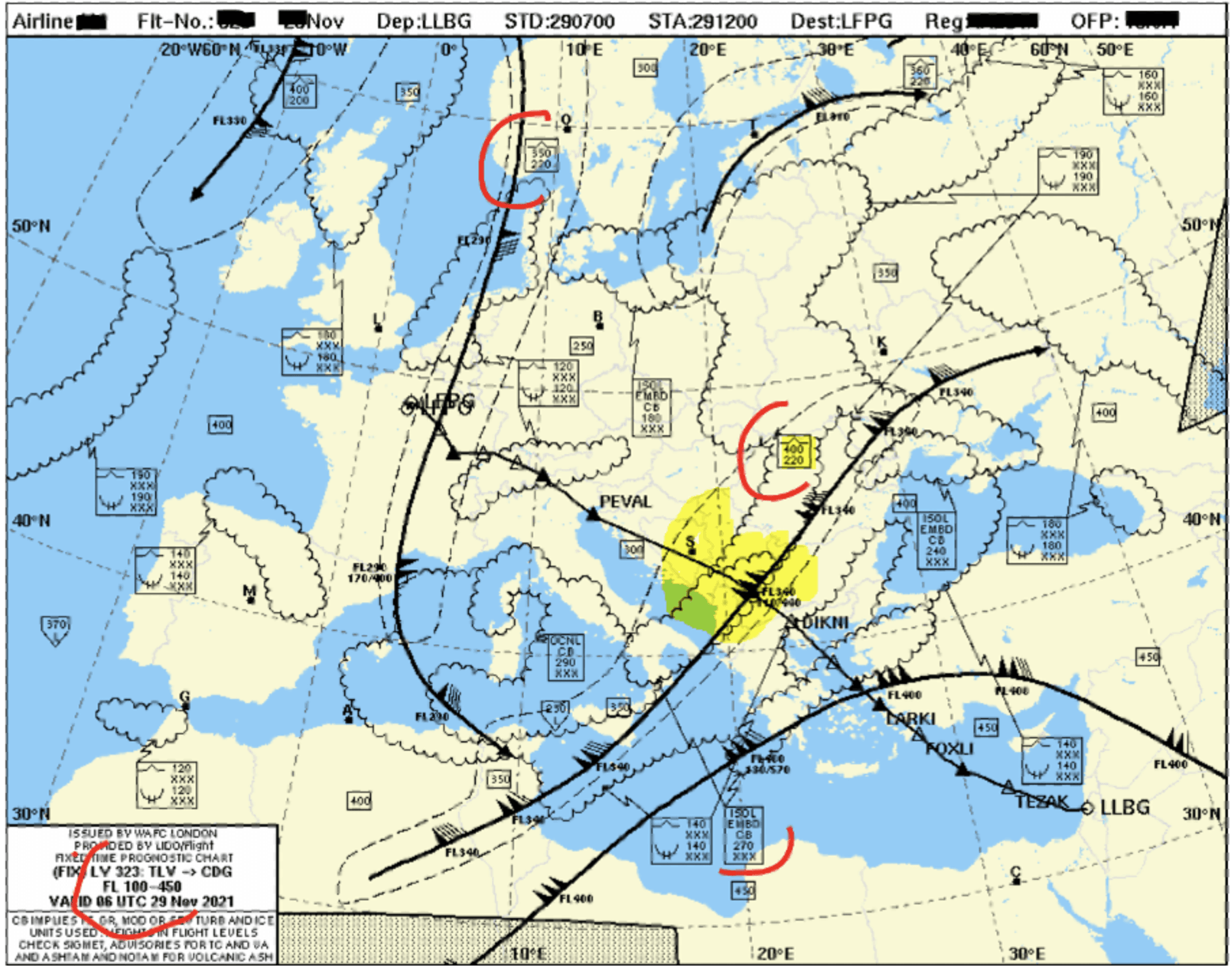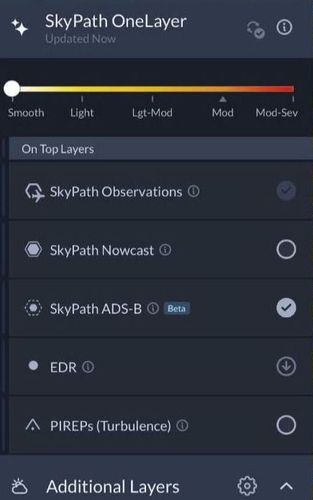Background
With global weather changes, turbulence has become a common phenomenon that can significantly impact fuel consumption. Pilots and dispatchers often rely on weather charts or other forecasting tools to analyze expected en-route turbulence, but these charts are typically imprecise. For example, in an area where moderate turbulence is forecast, it may in fact have only a small probability of actually occurring, while there is statistically a greater chance of encountering turbulence outside of designated areas.
This uncertainty can lead to unnecessary added costs for airlines. Pilots may add extra fuel to their flight plan to allow for the flight level changes that would be required should they encounter turbulence. Dispatchers may also choose to use a lower flight level, or bypass an area on the route, to avoid areas in which turbulence has been forecast. Both of these actions can increase fuel consumption and costs.
One solution to this problem is the use of real-time turbulence data, such as that provided by SkyPath. With accurate, up-to-date information on turbulence, pilots can make calculated decisions about their flight path and altitude. They can avoid unnecessary flight level changes that waste fuel, and instead choose a more efficient option. And with the all-new Nowcasting model, the range and accuracy of the SkyPath solution are even better.
Case Study
In a B789 flight from LLBG to LFPG:
- The flight release included 10 minutes of extra fuel [632kg] due to en-route weather prediction of turbulence [see below - Flight release, WX charts]
- The calculated fuel burn due to carrying this extra fuel is 63kg, equal to $47.25 [based on Aug 2023 fuel prices].


<u>SIG WX charts that came with the flight brief</u> Note the highlighted area – moderate turbulence between FL220-400. Planned FL was 380
Outcome
In the event, no significant turbulence occurred during the flight, so the extra fuel added to the flight was not needed, resulting in an unnecessary fuel burn equal to $47.25. This extra fuel could accumulate to millions per year across an airline’s flights. With SkyPath’s real-time, predictive, and accurate turbulence data, this could have been avoided, and the airline could save significant costs annually.

Actual flight conditions as detected by SkyPath - mostly smooth air reports, with one light turbulence report for less than a minute (requiring no action or change)
Accurate real-time turbulence data can help reduce airline costs by enabling dispatchers and pilots to make informed decisions about their flight path and altitude. This can lead to more efficient fuel consumption flights.




